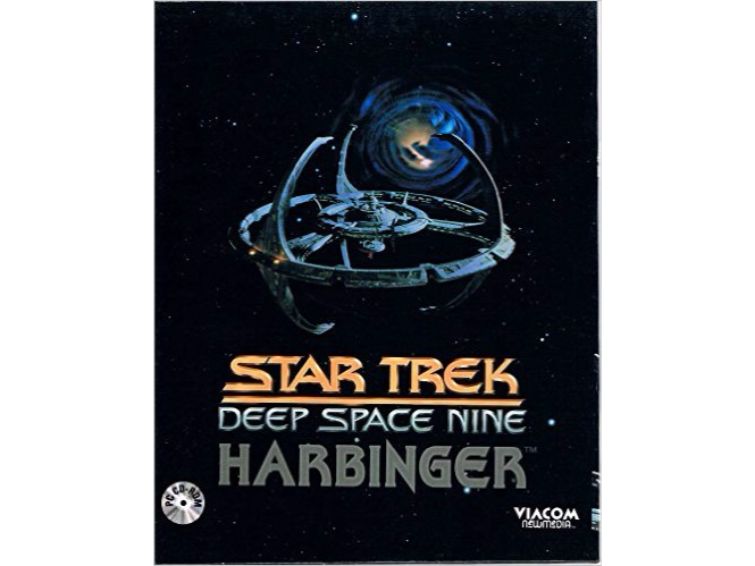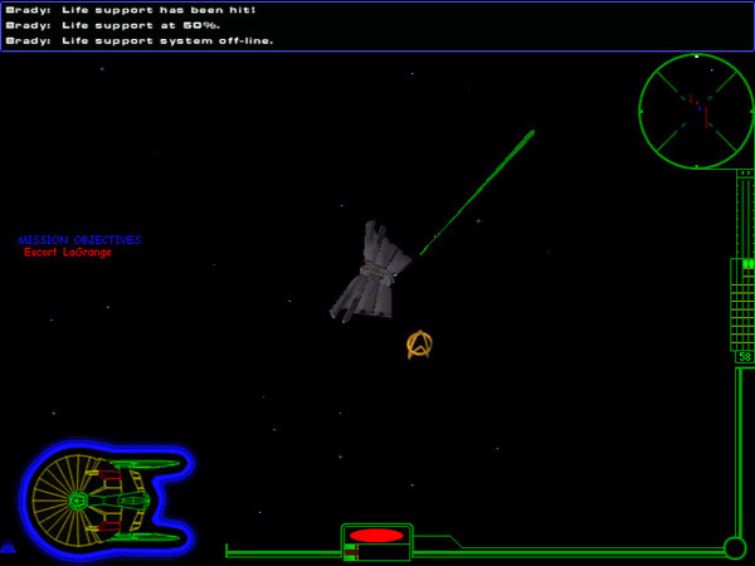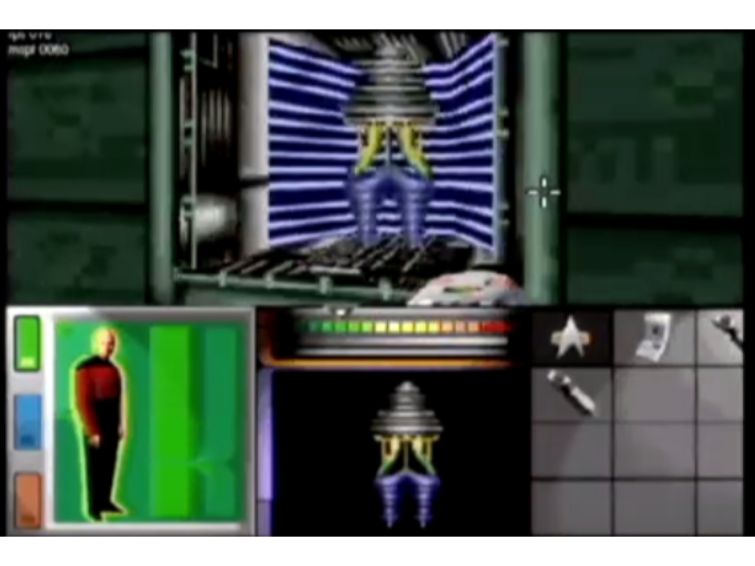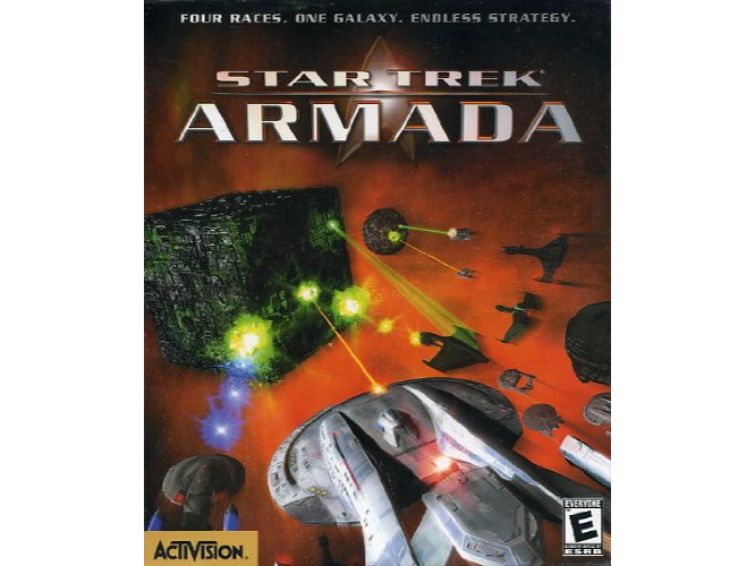A Brief History Of Star Trek PC Games
1996: Star Trek: Deep Space Nine: Harbinger
In this game, the player arrive at Deep Space Nine to find the space station has been almost completely abandoned. The station is then attacked by a strange new alien race, and an important ambassador is murdered. With the station poorly manned, it is up to you and and a handful of others to fight off the aliens and discover who killed the ambassador.
1997: Star Trek: Starfleet Academy
Star Trek: Starfleet Academy gave gamers the chance to live the life of a Starfleet cadet. The idea behind the game is to teach players about the Federation and undergo a series of ship command simulations. If successful, the game ends with the player being promoted to Captain of a star ship.
1997: Star Trek: Generations
In 1997, Star Trek: Generations was created based off of the 1994 Star Trek: Generations movie. The game follows the same story as the movie, and involves a variety of game play scenarios. Some parts of the game focus on commanding the Enterprise in battles, whereas at other times players control a single-character on away-missions.
1998: Star Trek TNG: Klingon Honor Guard
Klingon Honor Guard is the first Star Trek game that was straight first-person shooter. Although some prior Star Trek games contained FPS elements, this game differed by focusing entirely on first-person shooter gameplay. Players control a Klingon that has joined the Honor Guard of Gowron, the Klingon High Chancellor. The goal of the game is to use a variety of weapons to fight enemies and keep the Chancellor safe.
1998: Star Trek: Starship Creator
This game allows players to design their own starship based on the ones seen in the Star Trek universe. After designing the ship, players can then pick crew members and send it out on missions to test its effectiveness. This is helpful, as players can see where the ship has problems during the mission and later improve upon the design.
1999: Star Trek: Birth Of The Federation
Birth Of The Federation is a real-time strategy game set around The Next Generation and Deep Space Nine TV series. Players can pick between five different factions: the Federation, the Cardassian Union, the Ferengi Alliance, the Klingon Empire or the Romulan Empire. At the beginning of the game, players control a single planet with limited resources. The goal is to grow your control of the galaxy to dominate the other forces through a mixture of diplomatic, economic and military forces.
1999: Star Trek: Starfleet Command
Star Trek: Starfleet Command puts players in command of various Federation star ships. This is the second Star Trek game published by Interplay and can be viewed as an indirect sequel to Star Trek: Starfleet Academy. The game consists of several levels that often begin as diplomatic or exploration missions, which will require players to talk to NPCs and scan objects. The missions typically turn violent, however, and most of the game focuses on ship-to-ship combat.
Get Tom's Hardware's best news and in-depth reviews, straight to your inbox.
1999: Star Trek: Hidden Evil
Star Trek: Hidden Evil takes place immediately after the Star Trek: Insurrection movie, on the Ba'ku's home world. Following the events of the movie, the Ba'ku and another alien race known as the Son'a now live in peace on this planet, which has unique rejuvenating properties.
During the game, a powerful ancient artifact is discovered, and the player is sent along with Captain Picard and Lt. Commander Data to investigate. Actors Patrick Stewart and Brent Spiner perform voice acting for the game. The game play sets the player in a third-person perspective. Characters in the game are 3D models and move in front of a 2D background. The player uses a variety of items to explore the area during the investigation. There are also a few weapons available in order to fight off enemies.
2000: Star Trek: Armada
Similar to Star Trek: Hidden Evil, Star Trek: Armada takes place after the Star Trek: Insurrection movie and attempts to build on it. The game does not focus quite as heavily on the Ba'ku home world, however, as the game also incorporates the characters and story line of Star Trek: Deep Space Nine.
Also unlike Star Trek: Hidden Evil, Star trek: Armada is a real-time strategy game that place entirely in space. Using a series of star bases, players build ships in order to combat enemies and win battles.
2000: Star Trek: DS9 The Fallen
Star Trek: Deep Space Nine: The Fallen became one of the most successful Star Trek games of all time. The Fallen was published by Simon & Schuster, but it marks a sharp change in game play from the company's last Star Trek game. Instead of the FMV interactive-video model developed for Star Trek: Klingon and Star Trek: Borg, The Fallen uses 3D animated characters that the player controls from a third-person overhead perspective.
Players have the option to play as one of three characters: Captain Benjamin Sisko (played by Kevin Michael Richardson), Major Kira Nerys (Nana Visitor) or Lt. Commander Warf (Michael Dorn). In the beginning, the three characters are onboard the U.S.S. Defiant orbiting Bajor, but Major Kira soon transports to the surface. After Major Kira leaves the ship, both the Defiant and the planet are attacked by an unknown alien race.
Each character goes through a different series of missions that are indirectly linked to each other by the alien attack. Major Kira battles the aliens on the surface, Captain Sisko transports to the alien ship and attempts to stop them there, and Lt. Commander Warf fights the aliens that have boarded the Defiant. The only way to get the full story is to complete the game with all three characters.
Players use a variety of weapons and tools while fighting the aliens, including the basic phaser and tricorder. At times, it is necessary to use the tricorder to scan for enemies and supplies, and it's also used to find the frequency of force fields in order to shoot through them with the phaser.
MORE: Best Deals
MORE: Hot Bargains @PurchDeals
MORE: All Gaming Content
-
Reynar Uhhh...Birth of the Federation was turn-based. And glorious despite the game breaking memory leak and other bugs.Reply -
Mopar63 Birth of the Federation was an amazing game that needs to be remade. Sadly it was never properly supported. The Star Fleet Command series will always hold a special place in my heart. I worked with Taldren as a part of the "Inner Circle" a select group of play testers that worked directly with the devs. I was also the creator and Editor and Chief of Hailing Frequencies, an SFC Fanzine. Of all the Star Fleet Commands my least favorite was SFC III, I just never felt it captured the essence of SFC.Reply
I works on the New Worlds beta, all I can say is I am sorry. :-( I played a lot of Star Trek Online but Perfect World has pretty much ruined what started as a great Star Trek game. -
dimar I would love Star Trek game series, Mass Effect style. Rich story line and lots of action. But no prequels. I hate prequels!Reply -
enewmen Some where exceptionally good, but only similar to Star Trek - having warp, shield, photons, etc. The Cosmic Balance by SSI (1982) for example added strategy by limiting the space available by hull size. So you can have a ton of weapons, but no shields. Or Super fast but no weapons. Or good weapons & shields but no living space. Balanced, Or any combination. The paper game "Star Fleet Battles" (1979) was also excellent, but there was never a good computer game version of that.Reply
Edit: Most licenced "Star Trek" games where made for suckers and totally SUCKED! "Starship Creator" (1998) for example was exceptionally bad (wait 2 hours to cross the map and nothing happens).
Edit again: I have no love for Star Trek online - no good reason and I can't die. Just don't like it. -
wifiburger did not play a single startrek game, even tough the movies / tv series are decent,Reply
FPS MMO would be nice I'll play that :-) 20% no man sky and 80% destiny yeah that would be awesome









